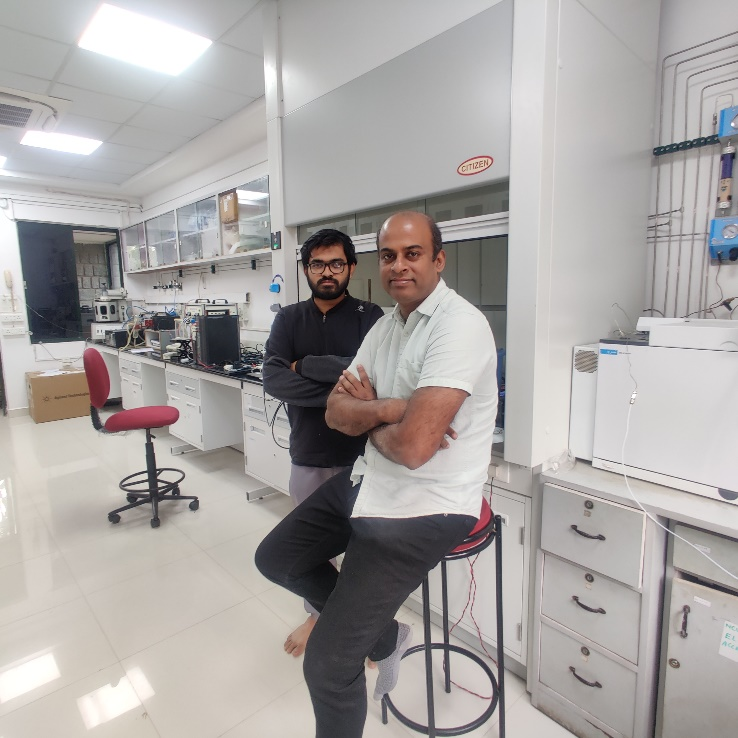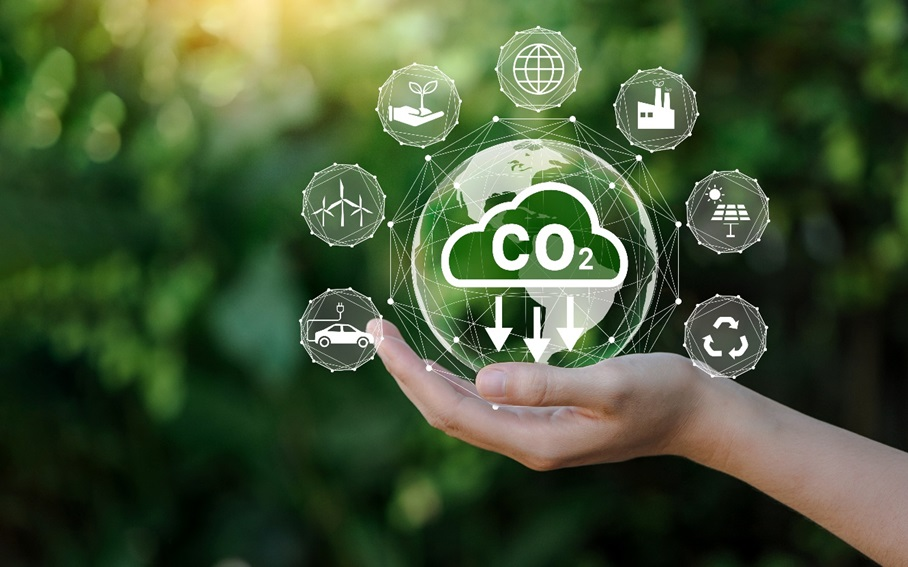Researchers have sythesised a novel and highly efficient photocatalyst that can convert carbon dioxide to high value products ethene and ethylene which are used as fuel gases and also for the polymer industry. The innovation has been scaled up and has received national and international attention.
In the run up towards a sustainable future, harnessing solar energy for fuel production is crucial. In this context, efficient photocatalysts are needed for catalysing the conversion of solar energy to fuel. These photocatalysts can, in fact, efficiently generate useful and high-valued products from carbon dioxide (CO2), which is important for solar fuel production. Now, while recent developments in have yielded some beneficial results towards this goal, materials for photocatalytic CO2 reduction reactions with selectivity towards such high-valued products are still in the early stages of development.

To this end, Professor Sebastian C. Peter, a material scientist from Jawaharlal Nehru Centre for Advanced Scientific Research (JNCASR), Bengaluru (an autonomous institution under the Department of Science & Technology, Govt. of India), has recently conducted a groundbreaking investigation. He undertook two interconnected studies with industry-academia collaboration. The findings of these studies were published in the Journal of the American Chemical Society (JACS) and Angewandte Chemie International Edition, respectively. The JACS study led to the development of a novel and highly efficient photocatalyst with an unprecedented selectivity of 99% toward C2H4, a typically high-value product obtained from CO2. Moreover, the Angewandte study reports the facile synthesis of the wurtzite phase of CuGaS2, a photocatalyst for CO2 reduction reaction, by colloidal synthesis.
The composite catalyst developed in the JACS study demonstrates highest formation rate in the field of photocatalysis. The research also introduces a template-free and cost-effective synthetic strategy for the development of the composite catalyst. This not only emphasizes practicality and cost efficiency, but also suggests a potentially scalable approach for large-scale applications. In the Angewandte study, the wurtzite phase of the photocatalyst undergoes in situ surface reconstruction under specific conditions. This reconstruction process ultimately facilitates the selective conversion of CO2 to ethylene.
Prof. Peter’s work focuses on developing, discovering, and scaling up materials with a keen focus on applications in the energy and environmental sectors. One significant area of his research involves utilizing various pathways, such as high-pressure and high-temperature conditions or harnessing electricity, to convert captured CO2 into valuable chemicals and fuels. In his pursuit of green technologies, he has ventured into utilizing sunlight to convert CO2 and water into various valuable compounds beyond methanol. This innovative approach, combining chemistry and chemical engineering, demonstrates the depth of Prof. Sebastian’s exploration into the structural nuances of catalysts.

This recent breakthrough by JNCASR scientists has facilitated the development of the country’s first plant that can convert CO2 into methanol. This involves connecting directly to flue streams from a power generation plant in the state of Telangana. By capturing CO2 from polluted air emissions and producing onsite hydrogen, they aim to convert one ton of CO2 per day into methanol.
Talking about these developments, Prof. Sebastian says, “The catalysts we have developed have not merely remained confined to the laboratory. In fact, we have successfully scaled up our innovations, with a dedicated building within the other JNCASR campus serving as the epicentre for large-scale demonstrations. These demonstrations have garnered attention from national and international agencies, including our participation in the prestigious NRG COSIA Carbon XPRIZE, where our technology received ISO certification.”
This research was supported by the Department of Science and Technology, Council of Scientific & Industrial Research (CSIR), Nanotechnology Platform Program of the Ministry of Education, Culture, Sports, Science and Technology, Japan (MEXT), The European Synchrotron Radiation Facility (ESRF), light source PETRA III at DESY, and JNCASR.
Publication links:
https://pubs.acs.org/doi/10.1021/jacs.2c10351
https://onlinelibrary.wiley.com/doi/10.1002/anie.202216613
Contact details:
Author Name: Prof. Sebastian. C. Peter
Email ID: sebastiancp[at]jncasr[dot]ac[dot]in






























